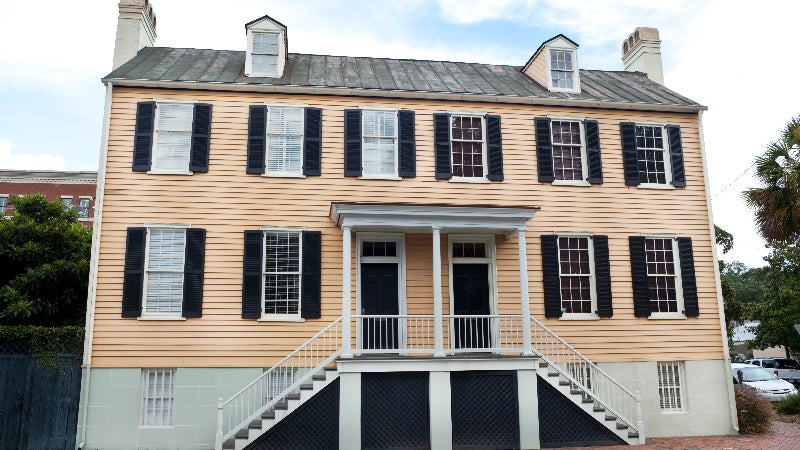Housing options for seniors




The search for the right living arrangements for older parents or relatives can be challenging, particularly as their needs regarding assistance and care evolve with age. Luckily, a variety of choices exist, ranging from simple adjustments in a current home to retirement communities and assisted living or nursing facilities. Read on to learn effective strategies for gracefully navigating the often stressful — and sometimes emotional — task of locating elderly housing options and places for senior living.
Key takeaways
- There is a wide range of options for senior living, from aging in place in their current home or moving in with grown children to assisted living and life plan communities.
- As our loved ones age, they may become unable to navigate their existing living conditions, need assistance with daily tasks or require ongoing nursing care. Some senior-living options can be costly.
- It’s smart to begin saving for future housing needs early — ideally before retirement, while you still have steady employment and income — and thinking about support systems you can rely on as you age.
2023 senior housing data
Here’s the latest data on the current state of senior living:
- According to the National Center for Assisted Living, more than 818,000 Americans currently reside in assisted living communities. Per the demographics, the majority of these residents are white females aged 85 or older.
- Only 34 percent of adults say their current home has the necessary features for them to age in place, according to the University of Michigan’s 2022 National Poll on Healthy Aging.
- A 2023 Construction Coverage report found that Tucson, Ariz., is the large metro area with the oldest average homebuyers in the U.S., with 34.5 percent of homebuyers being 55 or older.
- Nearly 80 percent of people 65 and older owned their own home in the U.S. in 2020.
- Per a Pew Research study, 18 percent of Americans lived in multi-generational households in 2021.
Senior living options
Aging in place
Many seniors prefer to remain in their homes as they age. This often requires renovations to make the home easier to navigate, as mobility decreases and things like stairs get harder to manage. The costs of these modifications can vary wildly, from a few hundred dollars for grab bars in a bathroom to thousands for bigger projects or additions. Plus, if these fixes are not aesthetically pleasing or look hospital-like, they could decrease a home’s value. To avoid taking on these projects, seniors can investigate other real estate options, like purchasing a home that’s already been renovated.
Pros:
- No need to move
- Might be cheaper than other options
Cons:
- Requires renovations
- No community, help or care on-site
Resources:
- The best home remodels for aging in place
- Aging in place with a cash-out refinance
- How to finance aging-in-place renovations
House sharing
Imagine aging in place, but with a roommate (and sometimes, even a roommate who pays rent). With this option, seniors can live independently while having someone to talk to and assist with daily living. Plus, seniors living together can slash their expenses significantly. Online resources like Senior Homeshares and Silvernest can help you find a good house-sharing match.
Pros:
- Companionship
- Cost-effective
Cons:
- Might need to spend money on renovations
- Risk of problematic tenant-roommates
Resources:
Moving in with kids
Financially, this option could be ideal: Moving in with adult children means seniors and their families avoid the cost of assisted living. As with aging in place, though, home modifications might be necessary. Homeowners planning to build an accessory dwelling unit (ADU), or separate housing unit on their lot for their parent to live in, should check local laws first. ADUs, often called mother-in-law suites, are not legal everywhere.
Pros:
- Cost-effective
- No need for assisted living facilities
Cons:
- Home renovations might be necessary
- Adult children must oversee care
Resources:
Independent living communities
As the name indicates, these developments allow their residents to live independently — they do not provide medical care or help with daily living. However, they do offer plenty of amenities, often including pools, gyms, activities, transportation and sometimes daily meals and laundry service. As you might imagine, buying or even renting in one of these resort-like communities is not cheap. If you can afford it, this is an ideal option for couples and seniors who are still in good physical health and want a low-maintenance lifestyle and neighbors similar in age.
Pros:
- Community and activities
- Lots of amenities
Cons:
- No medical care or support
- May be expensive
Resources:
Assisted living
Assisted living facilities can be similar to independent living, but with an additional layer of medical care and assistance with daily necessities. These facilities are ideal for seniors who require help with things like bathing and taking medications, but not the 24/7 skilled medical care that nursing homes provide. The care plans and levels can differ by facility, but the monthly median cost of assisted living communities runs about $4,500.
Pros:
- Help with daily needs and medical care
- Community and activities
Cons:
- Costs can be steep
- Might feel more like a nursing home
Resources:
Subsidized housing
Public housing may be available for low-income seniors — but receiving it often requires navigating a lengthy process and plenty of paperwork. The financial requirements differ by area, so seniors and their families should check with their local Public Housing Agency or ask a HUD housing counselor for guidance. HUD also offers a Section 202 Supportive Housing for the Elderly Program, which helps place seniors in affordable housing that meets their physical needs. Alternatively, seniors can rent traditional units, offsetting their costs with HUD’s Section 8 Housing Choice Voucher Program or Low-Income Housing Tax Credit (LIHTC) Program.
Pros:
- Most economical
- Sometimes includes care and community
Cons:
- Applying can be time-consuming
- Receiving housing can take a while
Life plan communities
These communities, also called continuing-care retirement communities or CCRCs, offer ascending levels of care, which seniors can transition through as they age. A single campus might encompass independent living, assisted living and skilled nursing. Seniors either pay monthly rent or an initial payment followed by monthly maintenance or service fees. This is not an ideal option for those living on Social Security, as costs tend to be high: According to the National Investment Center for Seniors Housing & Care, the average monthly rental fee in the first quarter of 2023 ranged from $3,450 to $7,303.
Pros:
- Can age in place within one campus
- Tiered care levels
Cons:
- High costs
- May need to move from one building to another
Affording senior living
It’s important to start saving for retirement early so that your housing needs can be met when you are older, whichever senior-living option you decide on.
Time is your greatest ally when saving for retirement, due to the power of compounding.— Greg McBride, Bankrate Chief Financial Analyst
“Every dollar you put away in your 20s can be $17 by the time you retire,” McBride says. “The biggest financial regret Americans have is not starting to save for retirement earlier, and that regret only grows bigger as retirement gets closer.”
He recommends earmarking 15 percent of your income to go toward retirement, if possible — and working your way up to that goal if you can’t spare that much right now. “The sooner you can get in the habit of saving 15 percent for retirement, the better,” he says. “If you’re currently far short of that, start by immediately increasing your retirement plan contributions to 10 percent of pay, and stair-step it up from there until you get to 15 percent. The habit will stay with you as the years go by and your income rises.”
Once you’re older, McBride says, you can take advantage of catch-up contributions beginning the year you turn 50 in order to make larger contributions to tax-advantaged retirement savings options, like a 401(k) and an IRA. “Consider delaying Social Security until age 70 to maximize your benefit,” he suggests. “Longevity annuities or long-term care policies are also options to consider. If you’re intent on aging in place, a reverse mortgage can be a lifeline for retirees with much of their wealth tied up in a principal residence.”
FAQs
-
There’s no single, official definition of a senior citizen, so it can be helpful to take a cue from government benefits. You can start collecting Social Security at age 62; however, you receive full benefits at full retirement age, which is generally 67. You generally become eligible for Medicare at age 65.
-
Contact your local Public Housing Agency or HUD, the U.S. Department of Housing and Urban Development, to find out about what housing programs you may be eligible for. Be forewarned that these programs may have long application processes and require a lot of paperwork.
-
Generally speaking, nursing homes provide more extensive medical care than assisted living facilities. Assisted living is ideal for people who are able to take care of themselves for the most part, but might need a bit of help when it comes to things like managing medications. Nursing homes, on the other hand, are more for people who need round-the-clock care or highly skilled medical treatment. Both can be expensive, but nursing homes are more so due to the heightened level of care.
-
You might be able to, particularly if the parent is a veteran or is eligible for Medicaid. To find out if your state will compensate you for long-term Medicaid services, contact your state Medicaid program. Vets should reach out to their local Veterans Affairs office to investigate its different plans offering payment for care. In addition, if your parent has long-term care insurance, that coverage might compensate family members for care.





